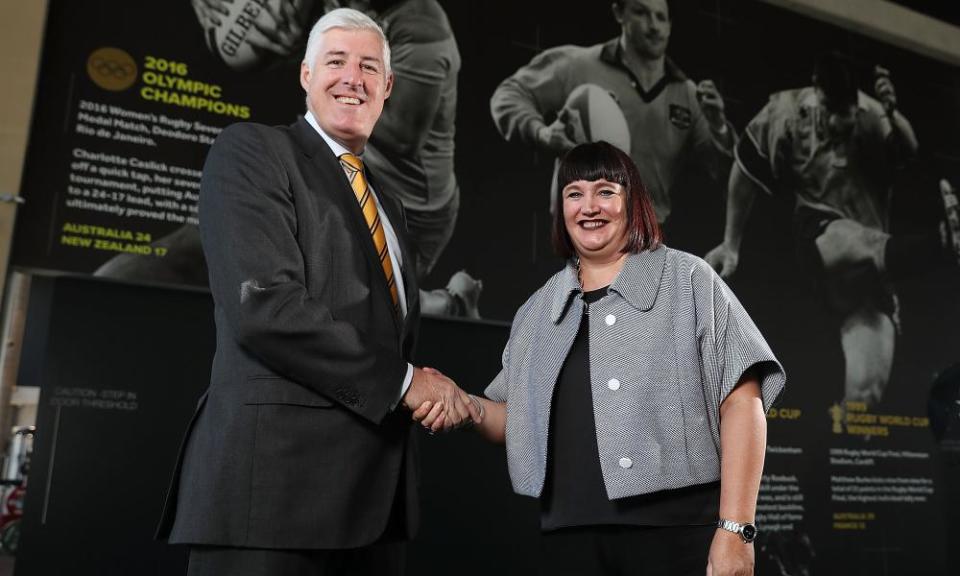Raelene Castle's fresh outlook well suited to enormity of task facing her | Bret Harris

Has Raelene Castle been given the worst hospital pass in Australian rugby history?
With her appointment as chief executive of the recently re-branded Rugby Australia, Raelene Castle has inherited a divided and dispirited sport from her predecessor, Bill Pulver, and faces a challenge to restore a game whose ills have become almost inoperable.
Castle has said she is looking forward to “getting out” into rugby communities across Australia, but she should brace herself for what she will encounter.
She will find community and club rugby disaffected with those who govern the sport; a Super Rugby landscape which is uncompetitive with its neighbours across the Tasman and an inconsistent Wallabies team that is losing the battle for hearts and minds in a harsh Australian sporting environment.
There are genuine fears that at this rate rugby in Australia, still regarded as a game for the privileged, will be reduced to a minor sport and then no one will be able to save it from itself.
That is the enormity of the task facing Castle, a seasoned sports administrator in netball in New Zealand and with the Canterbury Bulldogs NRL team. Interestingly, Castle is the first Rugby Australia (formerly ARU) CEO with a background in sports administration. John O’Neill was a banker, Gary Flowers was a lawyer and Pulver was a marketer.
Her lack of experience in Australian rugby – yet being close enough to observe it – is probably a good thing for Castle. There is said to have been 200 applicants for the job, but what Castle possessed was a fresh pair of eyes or perhaps even more important was what she did not possess, baggage.
The acrimony and distrust among the major stakeholders in the game has reached a level where a fresh start was required.
It is perhaps telling that the interview process for the new CEO involved the chairmen of the Super Rugby franchises. How much influence they had on the final decision is hard to know, but it is an example of Rugby Australia attempting to become more inclusive.
And that could be a tell-tale sign of the kind of administration Rugby Australia’s board is expecting Castle to implement to heal a fractured rugby nation.
As an Australian-born New Zealander it will be fascinating to see what direction Castle attempts to take rugby in this country. She would not be oblivious to the operation of the centralised system in New Zealand which has helped to deliver unprecedented success to the All Blacks and the Kiwis’ Super Rugby teams.
But Castle would need to coerce and cajole Australia’s Super Rugby states – particularly NSW and Queensland – to accept a similar model, which is unlikely to happen.
Instead of a centralised system, the indications are that Castle may focus on creating a more collegiate, or collaborative, type of administration in Australian rugby.
There needs to be a new deal struck between Rugby Australia and its constituents from the Wallabies to Super Rugby to club rugby to sevens rugby to schools rugby. Everyone who picks up a rugby ball must feel part of the team.
One of the most important aspects of a rugby team is the inter-connectivity between the players. Well, the same applies to the stakeholders in the game, but like players those stakeholders need guidance, leadership, motivation and trust.
For this kind of collaborative model to succeed every stakeholder in the game needs to be aware of their rights and responsibilities and where they truly fit in the tapestry of Australian rugby.
Whichever way she decides to go, Castle will need to make good decisions on a regular basis. The margin for error is very slim for Australian rugby, which is falling far behind the AFL, NRL and even football.
Castle must not only catch the hospital pass that has been thrown to her, but take the hit, steady herself, and then launch the biggest counter-attack Australian rugby has ever seen.

 Yahoo Sport
Yahoo Sport 





































